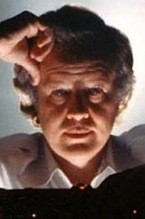Tuesday, April 29, 1986.
DIRECTOR DOUGLAS TRUMBULL DOESN'T just make movies. He creates "sensory events."
"I'm trying to create experiences that transcend anything you could ever experience in your life," the special-effects wizard told a Seattle audience in mid-1978. At that time, Trumbull had an idea for "a quantum leap" in film technology that would result in "heightened reality" for the audience.
Today, he calls it Showscan. It made its international debut last year at Japan's Expo 85, and will be on view in two Expo 86 pavilions. As it turns out, Trumbull's process really is a quantum leap, and it could just be the basis for a technical revolution to rank with the development of film sound and colour.
The movies "move" because of a phenomenon called persistence of vision. A "motion picture" is really just a sequence of still photographs flashed on a screen at the rate of 24 frames per second (fps). Between flashes the screen is actually blank, but because the eye "persists" in seeing the previous image, we "see" movement.
Silent films, shown at about 16 fps, were called "flickers" because those blank spaces lasted longer and registered on the brain. By increasing the speed at which films were photographed and projected, moviemakers were able to increase the clarity of the image on the screen. After 1927, 24 fps became the standard for 35mm sound films.
In 1956, showman Michael Todd attempted to up the ante by releasing the roadshow (reserved seat) version of his Around the World in 80 Days as a 30 fps feature. In addition, he increased the size of his film stock from 35mm to 70mm.
Though the improvement in the picture quality was considerable, there was no rush to change long-established industry standards.
Trumbull's Showscan doubles Todd's bid, increasing camera and projector speeds to 60 fps. "The effect," says the filmmaker, "is mind-bending.
"The audience becomes a participant (because the effect) is three-dimensional. The screen actually seems to disappear. It's much more like a real experience." In development for more than a decade, Showscan is now making its move into the marketplace.
At the British Columbia Pavilion, fairgoers can see the process at work in Zargon, Vancouver director Rob Turner's 16-minute travel fantasy featuring child actress Fairuza Balk, who starred in last year's Return to Oz [1985].
At the Canada Pavilion, the Showscan attraction is the seven-minute Earthwatch, director Donald Brittain's sweeping aerial examination of the Canadian landscape.
A pair of striking "sensory events," they could be the look of film's future.
The above is a restored version of a Province Expo 86 preview feature by Michael Walsh originally published in 1986. For additional information on this archived material, please visit my FAQ.
Afterword: In 2015, during an interview at the Sun Valley Film Festival, actor Bruce Dern called director Douglas Trumbull "a genius." The star of Trumbull's debut feature, 1972's Silent Running, Dern added that “When he looks through the eyepiece he sees something others don’t see . . . magic.” The magic went out of Hollywood filmmaking for Trumbull in 1981, when actress Natalie Wood died during the making of his second big studio feature, Brainstorm. Though her death, "under very suspicious circumstances," was in no way associated with his film, the project was the subject of nearly two years of legal wrangling before its completion and disappointing release. “I had to personally make a life decision,” he later told The Hollywood Reporter. Exhausted, “I just had to stop. I had been a writer-director all my life, and I decided it wasn't for me . . . I decided to leave the movie business.”
Trumbull had hoped to make Brainstorm in his new Showscan process, but MGM balked at the expense. Soured on corporate Hollywood, the Los Angeles-born director relocated to western Massachusetts. There he formed his own company to develop special-venue projects, such as the Showscan films seen at Expo 86. In 1993, Trumbull (along with Geoffrey Williamson, Robert Auguste and Edmund DiGiulio), won a Scientific and Engineering Academy Award for developing the Showscan camera system. The honour notwithstanding, the Showscan Film Corporation, which produced and marketed the equipment, declared bankruptcy in 2002, with the process being acquired by a new company, Showscan Entertainment.
Thirty years on, the mainstream entertainment industry has yet to embrace Trumbull's higher-frame-rate (hfr) technology. That could change in 2016. Three weeks ago (April 16), director Ang Lee created a sensation at the Future of Cinema Conference in Las Vegas when he screened an 11-minute preview of his Billy Lynn’s Long Halftime Walk. Scheduled for release in November, it's the first feature to be shot at 120 fps. And then there are director James Cameron's four Avatar sequels, scheduled to begin production in New Zealand any day now. Cameron, a long-time advocate of the hfr tech, is on record as saying that his new movies may use it. Trumbull, the pioneer, is currently promoting a new digital projection system called MAGI, yet one more possible future for film presentation.
See also: The 13 articles included in this, the first of four Expo 86 special reports, are:
